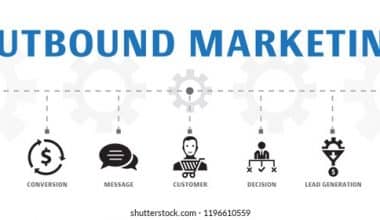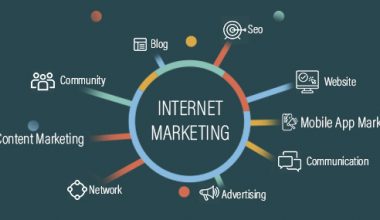Today, building a strong and memorable brand is crucial for success. However, having a visually appealing logo and a catchy tagline is not enough. To truly connect with your target audience and differentiate yourself from competitors, have a clear and consistent brand message. But what exactly is brand messaging, and how can you create it effectively? In this article, we explain the concept of brand messaging, the guide, framework, strategy, and steps you can take to craft a compelling and impactful message that resonates with your customers. So, if you want to take your business to the next level and solidify your position in the market, read on to discover the secrets of successful brand messaging.
What Is Brand Messaging?
Brand messaging refers to the communication strategy a company uses to convey its values, mission, and unique selling points to its target audience. It encompasses the language, tone, and style of messaging the company employs across various channels and platforms. Effective brand messaging helps to differentiate a company from its competitors and creates a strong brand identity in the minds of consumers.
At its core, brand messaging is all about connecting with customers on an emotional level. It goes beyond just promoting products or services and instead focuses on building a relationship with the audience. By crafting a consistent and compelling message, companies can build trust and loyalty among their customers. This, in turn, can lead to increased brand recognition, customer engagement, and business growth. However, successful logo messaging goes with the company’s overall marketing strategy to resonate with the needs and preferences of its target market.
Brand Messaging Framework
A brand messaging framework is a strategic tool businesses use to effectively communicate their brand’s value proposition. It provides a consistent and cohesive message that resonates with its target audience and differentiates them from their competitors. The framework typically includes the company’s positioning, core values, unique selling points, and key messages. By implementing a brand messaging framework, you can ensure your message is clear, compelling, and consistent across all marketing efforts. Hence, this helps build brand recognition and loyalty, as well as attract and retain customers.
Meanwhile, creating a brand messaging framework involves extensive research and analysis to understand the target audience and competitive landscape. It requires a deep understanding of the brand’s strengths and goals, as well as a comprehensive understanding of the needs and desires of the target market. With this information, businesses can develop a messaging strategy that speaks directly to their audience’s pain points and positions their brand as the solution. Additionally, the brand messaging framework serves as a blueprint for all marketing and communication activities, ensuring your company’s message remains focused and impactful.
Brand Messaging Strategy
Brand messaging strategy is a crucial component of any successful marketing plan. It involves creating a clear and consistent message that effectively communicates a brand’s values, benefits, and unique selling points. Moreover, a well-crafted brand messaging strategy helps businesses differentiate themselves from their competitors and build a strong brand identity in the minds of their target audience. This strategy should resonate with the intended audience, evoke emotions, and create a memorable connection with the brand. However, here are the pinpoints:
- First, an effective brand messaging strategy should align with the brand’s overall marketing objectives and target market.
- Secondly, it should be simple, concise, and easy for consumers to understand. The messaging should focus on addressing the pain points and needs of the target audience and highlight how the logo can provide a solution or fulfill those needs.
- Also, consistency is key in brand messaging strategy, ensuring the message passes across all marketing channels and platforms.
So, with a strong and compelling brand voice, you can attract and retain customers, increase brand loyalty, and drive sales and business growth.
Brand Messaging Guide
A brand messaging guide is essential for any business looking to create a strong and consistent brand identity. This guide serves as a roadmap for the company’s messaging strategy, outlining the key messages the firm wants to convey to its target audience. It includes guidelines for tone of voice, personality, and key differentiators to create a unified message across all communication channels. With a brand messaging guide, you can build trust and loyalty among your customers.
In addition, a brand messaging guide helps your business from others. By clearly defining your unique selling propositions and key messages, you can effectively communicate your services to customers. In essence, a brand messaging guide is a reference point for all marketing and communication activities, ensuring every content aligns with your company’s objectives.
How To Craft Brand Messaging
Here are some key steps to help you craft effective brand messaging:
#1. Define Your Brand
First, start by clearly defining your brand’s identity. Identify your target market, competition, and what sets your brand apart. Consider the unique benefits you offer to customers and the problems your brand solves. This step forms the foundation of your brand messaging.
#2. Determine Your Key Message
Your logo message should be concise and powerful. It should communicate your brand’s value proposition and differentiate it from competitors. Identify the key aspects of your brand that you want to emphasize and align them with your target audience’s needs and desires.
#3. Understand Your Audience
To create effective brand name, you need to know and understand your target audience. Research their demographic information, behavior, preferences, and pain points. This information will help you tailor your message to resonate with them effectively.
#4. Craft Your Brand Story
People connect with stories, so create a compelling narrative that conveys your brand’s purpose and values. Explain how your brand came to be and illustrate the benefits on people’s lives. This emotional connection will help establish a genuine relationship with your audience.
#5. Use Clear And Consistent Language
Your brand logo should be clear, concise, and easy to comprehend. Avoid using jargon or complicated language that might confuse your audience. Additionally, ensure your messaging is consistent across all platforms and communication channels to reinforce your company’s identity.
#6. Be Authentic And Transparent
Honesty and authenticity are paramount in brand name. Be truthful about your brand and what it stands for, and avoid exaggerations or false promises. Transparency builds trust, which is vital for long-term brand loyalty.
#7. Test And Refine Your Messaging
After crafting your brand logo, test it with a focus group or sample audience. Then, gather feedback and make adjustments. Moreover, continuously refine and improve your messaging based on customer responses and market trends.
#8. Integrate Your Messaging
Finally, ensure your logo messaging integrates into all marketing materials, including your website, social media platforms, advertisements, and customer interactions. Consistent messaging creates a cohesive brand experience and strengthens company recognition.
Overall, crafting brand messaging requires a deep understanding of your brand and audience, as well as effective storytelling skills. With these steps, you can create compelling and impactful brand messaging.
What Is Brand Core Messaging?
Brand core messaging refers to the central message or theme a company wants to communicate to its target audience. It encapsulates the essence of the brand’s values, mission, and unique selling proposition. Additionally, the core messaging serves as the foundation for all company’s communication and guide on how the logo should circulate across various marketing channels.
What Should Be Included In A Brand Messaging Guide?
- There are many things you should include in a brand messaging guide. First and foremost, provide a clear and concise description of your organization’s mission, vision, and values. This helps to establish the foundation and ensures all messaging aligns with your organization’s overarching goals and principles.
- Also, include a detailed description of your target audience. This encompasses the demographic, psychographic, and behavioral characteristics of the audience. It enables your organization to tailor its messaging to specific needs and desires.
- The guide should also outline the key messages and positioning statements your organization wants to convey. Meanwhile, these messages should be consistent, and catchy, and differentiate the logo from its competitors.
- Furthermore, the guide should provide guidelines for tone of voice, style, and language. This is to ensure your company’s messaging aligns with its desired image.
What Is Apple’s Brand Message?
Apple’s brand message is “Simplicity, Creativity, and Humanity”. The company calls these their three lenses. From their sleek and minimalistic product designs to their intuitive and user-friendly software, Apple constantly strives to make technology accessible to everyone. Additionally, their logo message centers on the belief that technology should seamlessly integrate into one’s life. That’s making tasks easier and enhancing overall productivity.
What Is The Difference Between Brand Messaging and Marketing Messaging?
Brand messaging is the essence of a company’s brand identity. It encompasses the values, personality, and positioning of the brand. It aims to create an emotional connection with the target audience and differentiate the brand from its competitors. Moreover, the messaging is broader and more long-term, consistent across all marketing channels and touchpoints. It helps to establish brand recognition, loyalty, brand storytelling, and advertising campaigns.
On the other hand, marketing messaging focuses on generating immediate action from the target audience. It is to promote specific products or services, highlight their features and benefits, and persuade customers to purchase. Also, marketing messaging is more targeted and actionable to customer segments or marketing campaigns. It is typically more short-term and depends on different marketing channels and promotional materials. Additionally, marketing messaging can include tactics like discounts, promotions, call-to-action statements, and product details to drive sales and conversions.
In a nutshell, brand messaging is about creating a strong brand identity and emotional connection with the audience. While marketing messaging is more tactical and aims to drive immediate action and sales. Both are important for a company’s overall communication strategy, but they serve different purposes and require different approaches.
What Is An Example Of A Brand Messaging Strategy?
A successful example of a brand messaging strategy is Nike. Nike has a strong brand messaging strategy. The company focuses on empowering athletes and encouraging them to push their limits. Their famous tagline, “Just Do It,” encapsulates this logo message perfectly. The message is clear and simple: Nike wants to inspire people to take action and strive for greatness in their athletic pursuits. Hence, this messaging strategy resonates with audiences and makes Nike a leading athletic firm.
Another example of a brand messaging strategy is Coca-Cola. Coca-Cola’s messaging strategy revolves around happiness and bringing people together. They convey this message through their advertisements, featuring people connecting and sharing special moments over a bottle of Coca-Cola. In other words, Coca-Cola’s name messaging strategy is about creating joy and nostalgia. This also contributes to Coca-Cola’s long-standing success as one of the world’s beloved brands.
What Are The Benefits Of Brand Messaging?
One of the key benefits of brand messaging is that it helps a company differentiate itself from its competitors. Another advantage is that it helps build trust and credibility with consumers.
Final Thoughts
Creating effective brand messaging requires a deep understanding of the company’s values, target audience, and competitive landscape. Meanwhile, it should be consistent, clear, and memorable, capturing the attention and building an emotional connection with consumers. So, with the above steps, you can establish trust and ultimately drive customer loyalty and business growth.






